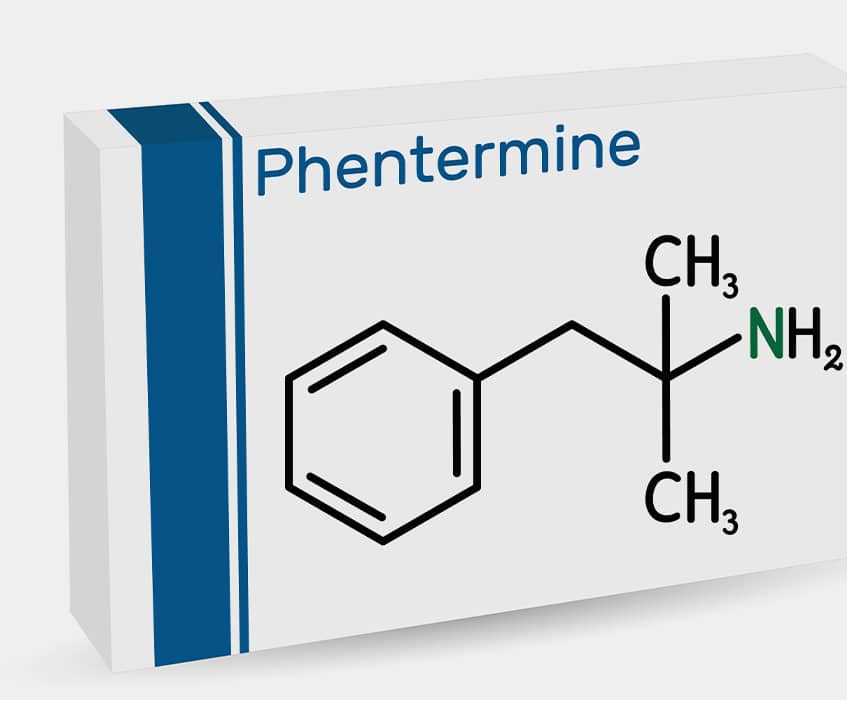

Medical Weight Loss in Totowa, NJ
Did you know that more than 40% of adults in the United States suffer from obesity? Unfortunately, there is no miracle cure for this condition. Perhaps worse is that more and more adults and children are gaining weight across the country, choosing the convenience of fast and nutrition-deficient foods over healthy eating, exercise, and positive life choices. From an aesthetic standpoint, being overweight is a struggle - clothes don't fit right, people make uncomfortable comments about how you look, and everyday activities are less appealing.
From a health and wellness standpoint, however, being obese is much worse. Your life is literally on the line. The people who love you and depend on you to be in their lives could lose you sooner than you expect. With time, you have a higher chance of suffering from significant, life-changing issues such as:
- Heart Disease
- High Blood Pressure
- Diabetes
- Stroke
- ED
- Sleep Apnea
- Respiratory Issues
- More
While obesity is a serious problem, a new medication on the market is giving hope to millions of men and women across the U.S. This game-changing treatment is called Semaglutide in Totowa, NJ. This anti-obesity medication is unique because it treats obesity as a chronic metabolic disease, rather than a problem that can be solved through sheer willpower. The best part? Semaglutide and other medical weight-loss peptides are now available at Global Life Rejuvenation.
Service Areas
Medical Weight Loss from Global Life Rejuvenation
At Global Life Rejuvenation, we understand that losing weight is not a one-size-fits-all approach. Our medical weight loss clinic offers custom medical weight loss plans tailored to your body, rather than plans based solely on your age or weight. In fact, our team of doctors and practitioners provides personalized guidance to help you achieve real results and live a healthier life.
Because the truth is maintaining good health and fitness are crucial in the modern world. Research has shown that viruses and diseases are more likely to affect those who are overweight and unhealthy. At Global Life Rejuvenation, we take a comprehensive, custom approach to medical weight loss that includes peptide therapy and more. We then work with you to make positive lifestyle changes, so you can lose weight, get healthy, and boost your wellbeing permanently - not for a few weeks or months.

Our medical weight loss plans can include:

Nutrition Guidance

Peptide Therapy

Hormone Therapy

Biometric Monitoring

Weight Loss Medications

Custom Medical Weight Loss Plans
If you're ready to get back to loving your life with more energy, confidence, and positivity, medical weight loss with peptide therapy may be for you. But to truly understand the benefits of peptides like Semaglutide, it's important you grasp what peptide therapy is and how it benefits your body.

Treatment in Totowa, NJ
Many individuals turn to peptide therapy to enhance their overall wellbeing by boosting hormones. Different types of peptides can target different areas of health, such as collagen peptides that can help improve skin, hair, and gut health.
Other peptides, such as AOD 9604, CJC 1295, and Semaglutide in Totowa, NJ, are incredibly beneficial for losing weight. Compared to vitamin supplements, peptide therapy works differently as peptides are already part of the proteins in our bodies, making them easier to absorb and benefit from. Conversely, our bodies can sometimes fail to absorb all the nutrients present in multivitamins, leading to their excretion through urine.
However, it's important to note that weight loss is a complex process that involves various factors like age, genetics, lifestyle, exercise, and diet. While peptides like Semaglutide can provide much-needed assistance in achieving your weight loss goals, they are most effective when combined with healthy dietary choices, regular exercise routines, and overall healthier lifestyle choices.
If you've already tried different weight loss plans and diets but haven't had any success, medical weight loss with peptide therapy may provide that extra boost you need to realize your goals.
What is Semaglutide Treatment in Totowa, NJ?
If you're looking to lose weight and keep it off, diet and exercise are important, but it can be difficult to stick to a routine. For busy adults and parents, Semaglutide can be a helpful tool for weight loss. This injection, approved by the FDA for diabetes and obesity, works by stimulating GLP-1 receptors in the brain to aid in weight loss and improve long-term health.
You may be wondering to yourself, "That sounds great, but how does this type of peptide work?" Semaglutide acts like glucagon in your body, which signals to your brain that you're full and don't need to eat anymore. When you take Semaglutide, and you try to overeat, your body waves a proverbial red flag as if to say, "That's enough."
Semaglutide also slows down digestion, reducing unnecessary snacking throughout the day. By reducing glucose spikes after meals, it reduces inflammation, which is important for overall health. Additionally, Semaglutide helps your pancreas secrete insulin, regulates the glucose levels in your body, and even has anti-aging and longevity properties. If you're struggling to lose weight, peptide therapies for weight loss like Semaglutide can be an invaluable addition to your weight loss plan from Global Life Rejuvenation.

When combined with healthy lifestyle choices like diet and exercise, Semaglutide can help provide:
- Long-Term Weight Loss
- Control of Insulin
- Reduction in Body Fat
- Lower Blood Pressure
- Lower Cholesterol
- Reduced Inflammation

Who Should Consider Semaglutide Therapy in Totowa, NJ?
There are multiple medications available to combat obesity by suppressing appetite and promoting weight loss. However, Semaglutide stands out as an exceptional option.
A recent study of 2,000 obese adults examined the effects of Semaglutide when combined with a diet and exercise program. The results were compared to those who only made lifestyle changes without taking Semaglutide. After 68 weeks, it was found that half of the participants using Semaglutide lost 15% of their body weight, with nearly a third losing 20%. In contrast, those who only made lifestyle changes lost an average of 2.4% of their weight.
It's obvious, then, that Semaglutide is a safe and effective supplement for your weight loss journey with Global Life Rejuvenation. But who is the ideal patient who should be taking it?
If you have a body mass index (BMI) of 27kg/m2 or higher and at least one weight-related condition, such as high blood pressure, Type 2 diabetes, or high cholesterol, or if your BMI is 30kg/m2 or higher, the FDA recommends Semaglutide for weight loss.

Healthy Eating Tips While Taking Semaglutide
As medical weight loss experts, one thing our doctors and practitioners know at Global Life Rejuvenation is that true weight loss isn't dictated by medicines. It's achieved by sticking to a combo of exercise, healthy life choices, and healthy eating habits. From there, peptides like Semaglutide in Totowa, NJ are great for taking your weight loss efforts to the next level of success.
One area where many patients fail in this process is with their diet. If you're considering Semaglutide treatment, keep these diet tips in mind.

Eat Whole Foods
To enhance your dietary habits, a practical approach is to concentrate on consuming whole foods, including fruits, vegetables, whole grains, lean protein, and healthy fats. These food items are rich in nutrients and can provide a feeling of fullness and satisfaction while also promoting your overall wellbeing.

Be Mindful When You Eat
Eating mindfully involves being fully present and engaged during meals. This entails taking the time to enjoy the flavor of your food, being aware of your body's hunger and fullness signals, and avoiding distractions like electronics or television.

Keep Your Body Hydrated
To maintain good health and support weight loss, it's crucial to drink plenty of water. It's recommended to drink at least 8-10 cups of water daily. You may also try adding low-calorie drinks like herbal tea or infused water to keep things interesting.

Use Meal Prepping to Your Advantage
Planning your meals in advance is an effective approach to maintaining a healthy diet. Set aside some time each week to plan your meals and snacks, keeping in mind to incorporate a balance of protein, complex carbohydrates, and healthy fats. This will prevent impulsive food choices and guarantee that you have nutritious options available when hunger strikes.
Other Peptide Therapies and Medicines for Medical Weight Loss in Totowa, NJ
Unlike many medical weight loss clinics, which only offer cookie-cutter weight loss plans and one or two additional fat-busting solutions, Global Life Rejuvenation provides access to new, innovative supplements and medicines. If you're used to fad diets and "quick" weight loss plans, peptides like AOD 9604 and others may be new to you. To help build your foundation of healthy living knowledge, let's take a look at a few of the most popular weight-loss peptides and medicines available at Global Life Rejuvenation.

AOD 9604 for Weight Loss
Often combined with Semaglutide regimens, AOD 9604 is known to promote fat breakdown, inhibit lipogenesis, and support tendons and cartilage. However, most recently, it has gained popularity due to its ability to boost metabolism and aid in burning fat.
What sets AOD 9604 apart is that it stimulates the pituitary gland without affecting tissue growth or blood sugar levels. Additionally, it can burn fat without causing overeating, making it a viable option for obese men and women who are trying to implement better eating habits.
Interestingly, AOD 9604 activates your body's fat-burning processes without requiring an HGH receptor. It also releases obese fat cells and reduces the accumulation of new fat cells. By helping to regulate blood sugar and manage insulin levels, AOD 9604 is excellent for weight loss but also for other maladies like inflammation.
Some conditions that this powerful peptide can help address include the following:
- Obesity
- Diabetes
- Damaged Cartilage
- Arthritis

CJC 1295 and Ipamorelin for Weight Loss
This medical weight loss supplement Is technically a combo of two peptides. These substances work by stimulating your pituitary gland to produce more of your body's natural human growth hormone, which is secreted during both waking and sleeping periods.
This results in increased protein synthesis and levels of insulin-like growth factors. As hormone secretagogues, they help release hormones into circulation while mimicking the pituitary gland's production. Extensive research has been conducted on the effects of CJC 1295 and Ipamorelin. As a tool for medical weight loss, it has shown very promising results.
That's because when growth hormone levels increase, nutrients are transported through the body faster, more fat is burned, and weight management becomes simpler. Additionally, because CJC 1295 and Ipamorelin increase the amount of growth hormone in your body, it stimulates the breakdown of triglycerides in adipocytes, leading to improved fat metabolism and reduced abdominal fat.
Benefits of CJC 1295 and Ipamorelin for weight loss include:
- Weight Loss
- Reduction in Body Fat
- Boosted Metabolism
- More Energy
- Enhanced Immune System
- More

MIC Injections for Weight Loss
A Methionine Inositol Choline (MIC) injection is a mixture of lipotropics that aid in fat breakdown. The key components - methionine, inositol, and choline - work together to metabolize fat cells and eliminate stored fat deposits in the liver and body. Methionine is an important amino acid, inositol contributes to proper cell formation, and choline is a water-soluble nutrient that promotes healthy liver function. When combined, these compounds may help reduce body fat.
When used in conjunction with a medical weight loss plan from Global Life Rejuvenation, MIC injections can be a powerful addition to reclaiming your health and wellbeing.
Request AppointmentPhentermine for Weight Loss
Like other weight loss peptides and medicines on this page, Phentermine can help you lose weight when you stick to a medical weight loss plan that includes dieting, exercise, and smart life choices. It does so by reducing your appetite, which limits the number of calories you eat every day.
As is the case with Semaglutide, Phentermine has been approved by the FDA and is supported by clinical studies that show it can support weight loss. With time, patience, and healthy living, this supplement may help you reach your wellness goals sooner than you thought possible.
Request Appointment
7-Keto DHEA for Weight Loss
In the body, 7-keto-DHEA is produced from dehydroepiandrosterone (DHEA), which is a hormone made by glands near your kidneys. However, unlike DHEA, 7-keto-DHEA is not converted into androgen and estrogen in your body. Instead, 7-keto-DHEA is used orally or topically to boost your body's metabolism. It also helps convert more of your energy into heat, instead of storing it in your body as fat, which can accumulate with time and lifestyle choices.
Much like Semaglutide treatment in Totowa, NJ, 7-keto-DHEA has been shown to be very effective for weight loss as well as a host of other issues. Additional benefits of taking 7-keto-DHEA may include the following:
- Weight Loss
- Improvement to Lean Muscle Mass
- Boosted Thyroid Activity
- Enhanced Memory
- Anti-Aging Treatment
- Better Memory
Lipo Scuplt Cream
Have you tried everything under the sun to try and eliminate the cellulite on your legs, arms, and other areas of your body? If you're like most people, getting rid of cellulite isn't just difficult - it's nearly impossible. Fortunately, those days are over. Lipo Sculpt Cream from Global Life Rejuvenation can help reduce the unsightly appearance of cellulite while also refining your figure and firming up your skin.
The active ingredients in this product have the ability to reduce and prevent the growth of fatty tissue while also improving microcirculation. They work together to treat both adipose and aqueous cellulite, and aid in the elimination of fatty deposits and excess water stored in the tissues. This results in a reduction of dimples and an overall improvement in the appearance of your skin.
If you have experienced success with a medical weight loss plan and reached your target weight but still suffer from cellulite, Lipo Sculpt Cream is a fantastic choice to consider. A few of the most common benefits include:
- Anti-Cellulite Properties Reduce Cellulite and Smooth Skin Dimples
- Slimming Effect for Reducing Thigh and Waist Circumference
- Leaves Your Skin Feeling Firm and Healthy

Health and Wellness Begin with Medical Weight Loss from Global Life Rejuvenation
Are you craving a productive life at a healthy weight? Are you ready to make a meaningful difference in your life and the lives of your loved ones? The pathway to wellbeing starts by contacting our office for an in-depth consultation, where we'll learn more about your weight-loss goals and needs.
From there, we'll create a custom weight-loss plan tailored to your body. This plan will map out the steps of your weight-loss journey, including peptide therapies like Semaglutide in Totowa, NJ. Though every person's weight management goals are different, when you're a patient at Global Life Rejuvenation, you benefit from dedicated doctors and practitioners committed to improving your weight and, in turn, your health.
Whether your health is on the line, or you don't like how being overweight makes you look and feel, our team is ready to guide you toward long-term health and happiness. This way, you can get healthy, stay in shape, and fall in love with your newfound body.
 Call Us 866.793.9933
Call Us 866.793.9933
Make an Apportment
Latest News in Totowa, NJ
Holiday Parade of Lights to Illuminate Totowa, Woodland Park, and Little Falls
TAPintohttps://www.tapinto.net/towns/passaic-valley/sections/arts-and-entertainment/articles/holiday-parade-of-lights-to-illuminate-totowa-woodland-park-and-little-falls
PASSAIC VALLEY, NJ - The Boroughs of Totowa, Woodland Park, and Little Falls are gearing up for the much-anticipated Totowa, West Paterson, Little Falls Fire Department Holiday Parade of Lights.The holiday festival in Woodland Park is set to dazzle along McBride Avenue from 1 to 4:30 p.m., and promises an array of delights for all ages. Visitors can indulge in a variety of activities, entertainment, and delicious bites from numerous vendors. The event boasts live performances, food trucks, DJ music, and a medley of ac...
PASSAIC VALLEY, NJ - The Boroughs of Totowa, Woodland Park, and Little Falls are gearing up for the much-anticipated Totowa, West Paterson, Little Falls Fire Department Holiday Parade of Lights.
The holiday festival in Woodland Park is set to dazzle along McBride Avenue from 1 to 4:30 p.m., and promises an array of delights for all ages. Visitors can indulge in a variety of activities, entertainment, and delicious bites from numerous vendors. The event boasts live performances, food trucks, DJ music, and a medley of activities tailored for kids. A highlight includes horse and carriage rides from 2 to 5 p.m. and an outdoor ice skating rink open from 1 to 5 p.m.
To usher in the holiday spirit, the Memorial Middle School band will take the stage with live music around 4:30 p.m. just before the grand tree lighting at 4:45 p.m. Welcoming the jolly season, Santa Claus will join the festivity, leading the tree lighting before meeting children at Dowling Gardens.
Sign Up for FREE Passaic Valley Newsletter
Get local news you can trust in your inbox.
This site is protected by reCAPTCHA and the Google Privacy Policy and Terms of Service apply.
The highlight of the day, the Holiday Parade of Lights, will embark from Passaic Valley High School at 5 p.m., traversing through Totowa, Woodland Park, and Little Falls. Over 100 elaborately adorned vehicles and floats will delight onlookers along the route.
One tradition continues as elves stationed along the parade route collect toys for Hackensack Meridian Health, St. Joseph's University Hospital in Paterson, Joseph M. Sanzari Children’s Hospital, and underprivileged families within the community. Donations of unwrapped, new toys can be brought to the parade to spread the holiday cheer.
Woodland Park is also collecting gift cards in any denomination to support those in need. Residents can contribute by placing the gift cards in the designated big red mailbox at the clock tower in Dowling Gardens during the event.
Residents and visitors are advised to expect road closures along the parade route starting around 4 p.m., until approximately 8:00 p.m.
Spectators are encouraged to park in neighborhoods along the route, as well as at 1225 McBride Ave. and the Park West Meadows Shopping Plaza if in Woodland Park. For Little Falls residents, no vehicles will be allowed in or out of the parade area or sections of the Township within the parade route. This includes Main Street between Browertown Road and First Ave, as well as Hopson Ave, Turnberry Road, Tulip Crescent, Van Ness Ave, Sindle Ave, Paterson Ave, and the Entire Jackson Park section of town (including all the side streets in these areas).
As the parade route extends from Totowa Road, running from Hillary Street to Union Boulevard, concluding officially at Crew Street, several streets will undergo closures for parking and traffic management. To alleviate congestion along local streets, organizers encourage attendees to carpool.
The festival will feature a vibrant array of vendors offering an eclectic mix of products, including ornaments, jewelry, candles, photography, pet accessories, and much more.
Can nuns be saved from extinction? Totowa's Little Sisters of the Poor is latest casualty
Deena Yellinhttps://www.northjersey.com/story/news/local/2023/09/26/little-sisters-of-the-poor-leave-nj-as-nuns-face-declining-numbers/70437730007/
5-minute readThis summer, the Little Sisters of the Poor had to admit the sad truth: Their congregation of Roman Catholic sisters, dedicated to helping the elderly, has been shrinking for years. In July, they announced they could no longer staff St. Joseph's Home for the Elderly, the Totowa nursing home where they had cared for thous...
5-minute read
This summer, the Little Sisters of the Poor had to admit the sad truth: Their congregation of Roman Catholic sisters, dedicated to helping the elderly, has been shrinking for years. In July, they announced they could no longer staff St. Joseph's Home for the Elderly, the Totowa nursing home where they had cared for thousands of residents over the last half-century.
The Little Sisters are proud of their long legacy in North Jersey: They began serving the community in 1878, when the order established a home for the elderly on South Eighth Street in Newark that later moved to Dey Street in Paterson. In 1976, they opened St. Joseph's, where a rotating cast of 30 nuns were known for their warmth and selfless care.
In the congregation's heyday in the 1960s, about 5,000 women were members of the Little Sisters of the Poor worldwide. Today, that number has declined to about 1,800, said the Rev. Mark Cregan, an attorney for the order. About 300 remain in the U.S.
Some orders − like the Sisters of Charity of New York, the first U.S. congregation of religious sisters − have stopped accepting new members altogether. Founded in 1817, the community of Roman Catholic women voted in April to begin a "path to completion" after going more than 20 years without successfully recruiting any new entrants.
In July, Mother Alice Marie Monica, provincial superior of the Little Sisters of the Poor said the nuns would withdraw from St. Joseph's, joining the trend of orders around the world that have struggled with dwindling membership.
"After being in New Jersey for 145 years, it is very hard for us Little Sisters to imagine that we will not be serving here in the future," Monica said, adding that the sisters' departure from the home is "a process that has been advancing over the past several years,"
When full, St. Joseph's was home to as many as 250 residents. But as staffing issues have mounted, the census has fallen. By November, the roughly 50 residents still living at the home on Shepherds Lane will move to other senior living facilities, including homes operated by the Little Sisters in other locations.
After that, the Little Sisters will seek a partner to transfer the land and buildings, the Diocese of Paterson said in a statement.
Kevin Sweeney, the bishop of the Diocese of Paterson said he was grateful for their service. "The care of the Little Sisters for the residents for almost a century and a half in our area, following in the line of Saint Jeanne Jugan, has placed love at the heart of their home. The Little Sisters have taught us to be rooted in faith and joyfulness and will ever have our gratitude."
Around the country, other congregations have made similar calculations. With the nun population shrinking, convents are closing or merging − and charities they staffed and supported have closed with them or transitioned to new management.
Will nuns go extinct? The numbers don't look good
In 1966, there were over 180,000 nuns in America. During that era, nuns played a vital role in Catholic schools, orphanages, and senior homes. But interest in the vocation has been waning for decades and today there are fewer than 35,000, according to the Center for Applied Research in the Apostolate at Georgetown University (CARA), which studies the Catholic Church.
Many of today's nuns are over 70 and few young women are replacing those who retire or pass away.
At one time, being a nun was a popular career choice for young Catholic women who wanted to teach, work in a hospital or help the poor − and who were shut out of other professions in a male-dominated society. But these days, with an array of career options available, vows of poverty, chastity and obedience don't seem to hold as much allure.
Sisterly love:Caldwell nuns have lived for a century and been friends nearly as long
"It used to be a badge of honor to have sons who were priests and daughters who were nuns," said Margaret McGuiness, a professor of religion at La Salle University in Philadelphia.
In the mid 1960s, nuns began to reexamine their missions, and many decided they didn't want to be limited to teaching or to wearing the habit, she said. "Sisters in some congregations began going out into the community and doing other types of work involving issues of social justice and advocacy." As a result, more Catholic women left religious life and fewer entered, she said.
Local orders closing down
The Monastery of the Dominican Nuns of the Perpetual Rosary in Camden closed in 2013, while the Sisters of Sorrowful Mother closed St. Francis Residential Community in Denville in 2021 and sold their property to a nonprofit healthcare company. The sprawling brick complex was demolished at the end of last year to make way for a more modern senior living complex.
Just to the south in Morris County, the former St. Ann Villa in Florham Park, long a home to aging Sisters of Charity, was also closed, the Diocese of Paterson announced in 2021. The nursing home, founded in 1930, was transferred in 2016 to Lutheran Social Ministries of New Jersey in a last-ditch attempt to keep it open.
In New York, the Sisters Servants of Mary in the Bronx, which has served the sick for nearly a century, is also closing its doors. At its height, the convent had around 30 sisters who visited and cared for the sick. But that number had dwindled to just three as of June.
A trickle of interest may keep religious orders going
The Sisters of Charity − an order founded by Elizabeth Ann Seton, the first U.S.-born Catholic saint − announced it would close to new members after deciding it no longer had the capacity to carry out its ministries or train newcomers, known as vocations. The order boasted of more than 1,300 nuns in the 1960s but its ranks had diminished to 154 as of April.
Polls show that young people today don't feel the same draw to religion as their parents and grandparents did. The media is replete with articles − from the the New York Times to Fox News - warning that nuns may be headed toward extinction.
But Mark Gray, a senior research associate at CARA, said that nuns won't disappear. Although their ranks are declining, congregations of sisters continue to draw new blood, albeit it in smaller numbers than before, he said. In 2021, 136 women in the U.S. entered religious life, he said, and between 2015 and 2021, 1279 women became nuns.
He attributed the steep decline to a period of "extraordinary growth in the Catholic Church in 1965 when the number of sisters peaked. That was far from the historical norm and the church received decades of service from these women." After that point, new entries slowed, he said.
More:A NJ pastor's coming-of-age tale about young priests makes its big-screen debut
A Gen X sister: 'We are not afraid for our future'
Sister Susan Francois of the Congregation of the Sisters St. Joseph of Peace in Englewood Cliffs, a 51-year-old self-described "Generation X Catholic Sister," said that while large orders may be a thing of the past, "that doesn't mean religious life is going away."
"When I entered the congregation in 2005, most of the sisters were 30 or 40 years older than me," she said. "But I felt like this community was a gift. It was a group of women of all ages and cultures who share the common desire to promote peace, which is our congregation's mission. I can't explain the difference it's made in my life, knowing that you are not alone. There's so much isolation in the world. I always have my sisters. We are committed to each other for life."
Although the congregation is unable to replace all its older members as they age, it is actively inviting new members, and small numbers of young women are responding. Two young women in their 20s are scheduled to join later this month, Francois said.
"We are not afraid for our future."
Correction: A prior version of this story incorrectly said the Sisters of Charity of New York founded the College of St. Elizabeth in Morris County. The college was in fact founded by a different order, the Sisters of Charity of St. Elizabeth. While the Sisters of Charity of New York has voted to stop taking new members, the Morris County order is "alive and well," a spokeswoman said on Tuesday.
Deena Yellin covers religion for NorthJersey.com. For unlimited access to her work covering how the spiritual intersects with our daily lives, please subscribe or activate your digital account today.
Email: [email protected]
Can nuns be saved from extinction? Totowa's Little Sisters of the Poor is latest casualty
Deena Yellinhttps://www.northjersey.com/story/news/local/2023/09/26/little-sisters-of-the-poor-leave-nj-as-nuns-face-declining-numbers/70437730007/
5-minute readThis summer, the Little Sisters of the Poor had to admit the sad truth: Their congregation of Roman Catholic sisters, dedicated to helping the elderly, has been shrinking for years. In July, they announced they could no longer staff St. Joseph's Home for the Elderly, the Totowa nursing home where they had cared for thous...
5-minute read
This summer, the Little Sisters of the Poor had to admit the sad truth: Their congregation of Roman Catholic sisters, dedicated to helping the elderly, has been shrinking for years. In July, they announced they could no longer staff St. Joseph's Home for the Elderly, the Totowa nursing home where they had cared for thousands of residents over the last half-century.
The Little Sisters are proud of their long legacy in North Jersey: They began serving the community in 1878, when the order established a home for the elderly on South Eighth Street in Newark that later moved to Dey Street in Paterson. In 1976, they opened St. Joseph's, where a rotating cast of 30 nuns were known for their warmth and selfless care.
In the congregation's heyday in the 1960s, about 5,000 women were members of the Little Sisters of the Poor worldwide. Today, that number has declined to about 1,800, said the Rev. Mark Cregan, an attorney for the order. About 300 remain in the U.S.
Some orders − like the Sisters of Charity of New York, the first U.S. congregation of religious sisters − have stopped accepting new members altogether. Founded in 1817, the community of Roman Catholic women voted in April to begin a "path to completion" after going more than 20 years without successfully recruiting any new entrants.
In July, Mother Alice Marie Monica, provincial superior of the Little Sisters of the Poor said the nuns would withdraw from St. Joseph's, joining the trend of orders around the world that have struggled with dwindling membership.
"After being in New Jersey for 145 years, it is very hard for us Little Sisters to imagine that we will not be serving here in the future," Monica said, adding that the sisters' departure from the home is "a process that has been advancing over the past several years,"
When full, St. Joseph's was home to as many as 250 residents. But as staffing issues have mounted, the census has fallen. By November, the roughly 50 residents still living at the home on Shepherds Lane will move to other senior living facilities, including homes operated by the Little Sisters in other locations.
After that, the Little Sisters will seek a partner to transfer the land and buildings, the Diocese of Paterson said in a statement.
Kevin Sweeney, the bishop of the Diocese of Paterson said he was grateful for their service. "The care of the Little Sisters for the residents for almost a century and a half in our area, following in the line of Saint Jeanne Jugan, has placed love at the heart of their home. The Little Sisters have taught us to be rooted in faith and joyfulness and will ever have our gratitude."
Around the country, other congregations have made similar calculations. With the nun population shrinking, convents are closing or merging − and charities they staffed and supported have closed with them or transitioned to new management.
Will nuns go extinct? The numbers don't look good
In 1966, there were over 180,000 nuns in America. During that era, nuns played a vital role in Catholic schools, orphanages, and senior homes. But interest in the vocation has been waning for decades and today there are fewer than 35,000, according to the Center for Applied Research in the Apostolate at Georgetown University (CARA), which studies the Catholic Church.
Many of today's nuns are over 70 and few young women are replacing those who retire or pass away.
At one time, being a nun was a popular career choice for young Catholic women who wanted to teach, work in a hospital or help the poor − and who were shut out of other professions in a male-dominated society. But these days, with an array of career options available, vows of poverty, chastity and obedience don't seem to hold as much allure.
Sisterly love:Caldwell nuns have lived for a century and been friends nearly as long
"It used to be a badge of honor to have sons who were priests and daughters who were nuns," said Margaret McGuiness, a professor of religion at La Salle University in Philadelphia.
In the mid 1960s, nuns began to reexamine their missions, and many decided they didn't want to be limited to teaching or to wearing the habit, she said. "Sisters in some congregations began going out into the community and doing other types of work involving issues of social justice and advocacy." As a result, more Catholic women left religious life and fewer entered, she said.
Local orders closing down
The Monastery of the Dominican Nuns of the Perpetual Rosary in Camden closed in 2013, while the Sisters of Sorrowful Mother closed St. Francis Residential Community in Denville in 2021 and sold their property to a nonprofit healthcare company. The sprawling brick complex was demolished at the end of last year to make way for a more modern senior living complex.
Just to the south in Morris County, the former St. Ann Villa in Florham Park, long a home to aging Sisters of Charity, was also closed, the Diocese of Paterson announced in 2021. The nursing home, founded in 1930, was transferred in 2016 to Lutheran Social Ministries of New Jersey in a last-ditch attempt to keep it open.
In New York, the Sisters Servants of Mary in the Bronx, which has served the sick for nearly a century, is also closing its doors. At its height, the convent had around 30 sisters who visited and cared for the sick. But that number had dwindled to just three as of June.
A trickle of interest may keep religious orders going
The Sisters of Charity − an order founded by Elizabeth Ann Seton, the first U.S.-born Catholic saint − announced it would close to new members after deciding it no longer had the capacity to carry out its ministries or train newcomers, known as vocations. The order boasted of more than 1,300 nuns in the 1960s but its ranks had diminished to 154 as of April.
Polls show that young people today don't feel the same draw to religion as their parents and grandparents did. The media is replete with articles − from the the New York Times to Fox News - warning that nuns may be headed toward extinction.
But Mark Gray, a senior research associate at CARA, said that nuns won't disappear. Although their ranks are declining, congregations of sisters continue to draw new blood, albeit it in smaller numbers than before, he said. In 2021, 136 women in the U.S. entered religious life, he said, and between 2015 and 2021, 1279 women became nuns.
He attributed the steep decline to a period of "extraordinary growth in the Catholic Church in 1965 when the number of sisters peaked. That was far from the historical norm and the church received decades of service from these women." After that point, new entries slowed, he said.
More:A NJ pastor's coming-of-age tale about young priests makes its big-screen debut
A Gen X sister: 'We are not afraid for our future'
Sister Susan Francois of the Congregation of the Sisters St. Joseph of Peace in Englewood Cliffs, a 51-year-old self-described "Generation X Catholic Sister," said that while large orders may be a thing of the past, "that doesn't mean religious life is going away."
"When I entered the congregation in 2005, most of the sisters were 30 or 40 years older than me," she said. "But I felt like this community was a gift. It was a group of women of all ages and cultures who share the common desire to promote peace, which is our congregation's mission. I can't explain the difference it's made in my life, knowing that you are not alone. There's so much isolation in the world. I always have my sisters. We are committed to each other for life."
Although the congregation is unable to replace all its older members as they age, it is actively inviting new members, and small numbers of young women are responding. Two young women in their 20s are scheduled to join later this month, Francois said.
"We are not afraid for our future."
Correction: A prior version of this story incorrectly said the Sisters of Charity of New York founded the College of St. Elizabeth in Morris County. The college was in fact founded by a different order, the Sisters of Charity of St. Elizabeth. While the Sisters of Charity of New York has voted to stop taking new members, the Morris County order is "alive and well," a spokeswoman said on Tuesday.
Deena Yellin covers religion for NorthJersey.com. For unlimited access to her work covering how the spiritual intersects with our daily lives, please subscribe or activate your digital account today.
Email: [email protected]
Totowa, NJ, Woman Finds Relief From Severe Migraine
hackensackmeridianhealth.orghttps://www.hackensackmeridianhealth.org/en/healthu/patient-perspectives/2023/05/woman-finds-relief-from-severe-migraine
Around the age of eight, Caitlin Webb, now 22, began getting migraines whenever she had her braces adjusted. After starting her period at age 12, the migraines became chronic, and the pain intensified. She’d have extreme dizziness, nausea, vomiting, cold sweats and uncontrollable shaking. “It makes you so fatigued,” she says. “The fatigue lasts forever. It never feels like it goes away.”The ceaseless misery of the headaches upended Caitlin’s life. She had been active in Girl Scouts, took dance class...
Around the age of eight, Caitlin Webb, now 22, began getting migraines whenever she had her braces adjusted. After starting her period at age 12, the migraines became chronic, and the pain intensified. She’d have extreme dizziness, nausea, vomiting, cold sweats and uncontrollable shaking. “It makes you so fatigued,” she says. “The fatigue lasts forever. It never feels like it goes away.”
The ceaseless misery of the headaches upended Caitlin’s life. She had been active in Girl Scouts, took dance classes and played a variety of seasonal sports, but all that was curtailed by migraines.
School became a challenge, too. Often, her peers and even teachers didn’t understand what was going on with her. “We had to do a lot of advocating for her,” says her mother, Diane, “It was very poorly understood that children could be affected by migraines and that these headaches could be of this much consequence to their lives.”
When Caitlin began seeing pediatric neurologists, she learned she had three different types of headaches disorders—migraine, cluster headaches and occipital neuralgia—in addition to several other health conditions.
Over time, she developed coping strategies. She found that sometimes just blowing single notes on her flute made a difference; it helped regulate her breathing and relax her tense body. She also learned that movement, particularly in the cold, such as ice skating, could decrease her pain. “Life hacks in combination with prescribed medications and other co-treatments,” have been essential in managing my headaches,” she says. “But I was still suffering quite a bit.”
Relief at Last
A breakthrough treatment came into her life when she was 19.
Caitlin had begun seeing an adult headache specialist, in part to begin transitioning out of pediatric medicine, but also because her longtime pediatric neurologist had recommended a pain management treatment he couldn’t provide. Caitlin could have seen a pain management specialist in New York, but that would have meant traveling there three times a week from her home in Totowa, New Jersey. Thankfully, she was able to find a headache specialist closer to home: Regina Krel, M.D., director of The Headache Center at the Hackensack Meridian Neuroscience Institute at Hackensack University Medical Center.
Dr. Krel started Caitlin on a pain management treatment, and while she did get some relief, it wasn’t significant. But a new class of medications for preventing migraine—calcitonin gene-related peptide antibodies (CGRP) monoclonal antibodies (mAbs)—became available in May 2018, and Dr. Krel thought those might be worth trying.
Starting the CGRP mAbs produced “miraculous” results, Caitlin says. She was migraine-free for 50 days straight. “It was beautiful,” she says. “With the migraines, I have this brain fog and my words can get jumbled up. But for those first 50 days, I felt like my brain just opened. I was able to think clearly.”
While that stretch of relief hasn’t been repeated in the two-and-a-half years since, between the quarterly CGRP mAbs infusions and her supportive treatment therapies, Caitlin has, at times, been able to reduce her headache days to four a month when she regularly had 25 to 30 a month, says Dr. Krel.
“Migraine is a neurological disorder for which there is no cure at this time,” Dr. Krel says. “Management has to be a combination of preventative therapy, rescue therapy and lifestyle modifications.”
Caitlin understands she’s in it for the long haul, but her current treatment protocol allows her to focus on her college studies and do things she enjoys, like photography, hiking, and searching for geocaches with her boyfriend. “Because the headaches are not constant, they're not as frequent, they're not as intense,” she says. “I do have more freedom now.”
Next Steps & Resources:
The material provided through HealthU is intended to be used as general information only and should not replace the advice of your physician. Always consult your physician for individual care.
Community Rallies Behind Sofie: A Heartwarming Brigade for a Brave Girl
TAPintohttps://www.tapinto.net/towns/passaic-valley/sections/health-and-wellness/articles/community-rallies-behind-sofie-a-heartwarming-brigade-for-a-brave-girl
TOTOWA, NJ - Residents of Totowa and neighboring towns came together Sunday for a brave young girl named Sofie, who is fighting a courageous battle against B-Cell Acute Lymphoblastic Leukemia.On July 8, Sofie received the devastating diagnosis, and since then, she has undergone two surgeries and started chemotherapy.Despite the challenging journey that lies ahead, the outpouring of love and care for Sofie was truly heartwarming, those in attendace said. Over 300 individuals, including community members, neighbo...
TOTOWA, NJ - Residents of Totowa and neighboring towns came together Sunday for a brave young girl named Sofie, who is fighting a courageous battle against B-Cell Acute Lymphoblastic Leukemia.
On July 8, Sofie received the devastating diagnosis, and since then, she has undergone two surgeries and started chemotherapy.
Despite the challenging journey that lies ahead, the outpouring of love and care for Sofie was truly heartwarming, those in attendace said. Over 300 individuals, including community members, neighbors, police, fire, EMT personnel, and other supporters, gathered for the "Sofie Brigade" in a powerful display of solidarity.
Sign Up for FREE Passaic Valley Newsletter
Get local news you can trust in your inbox.
Those who know Sofie describe her as sweet, kind, funny, down-to-earth, and an amazing softball player. Her presence on the field has been dearly missed by her coaches, teammates, and all who have had the privilege of knowing her. Sofie's passion for softball was evident as she could often be found on the field with her teammates, playing her heart out, and generously helping with setup and breakdowns, always with a radiant smile.
"There's nothing more comforting and uplifting than the love from our community," Coach Anna Mazza, who helped organize the brigade said. "We all came together for this one little girl, and it was so incredible to see the outpouring of support for Sofie and her family. We are only just getting started."
Coach Sara Mulroony, who helped organize the brigade as well, echoed the sentiment, calling the community's rally around Sofie "amazing."
"The Borough of Totowa and surrounding towns really showed their true colors of unity and love for one another,: Councilman Sanders Reynoso said. "Sofie's journey has just begun and we showed that we will be there supporting her and her family in every step of the way."
Mark Monteyne, Totowa Borough Recreation Director, emphasized the true power of community teamwork on a mission to spread positive vibes and hope, showing that when called upon, the community steps up for its residents in extraordinary ways.
"There are not enough words to explain how grateful I am to everyone who participated in the parade," Sofie said. "It caught me by surprise, and I loved it! Thank you all so much from the bottom of my heart."
The brigade was a heartfelt testament to the incredible spirit and love within the community. Sofie's journey may have just begun, but she can rest assured that she has an unwavering support system behind her every step of the way.
Those who wish to offer support, can make a donation here.
As Sofie bravely fights her battle, the love and encouragement of her community will undoubtedly serve as a beacon of hope on her journey to recovery.
Disclaimer:
